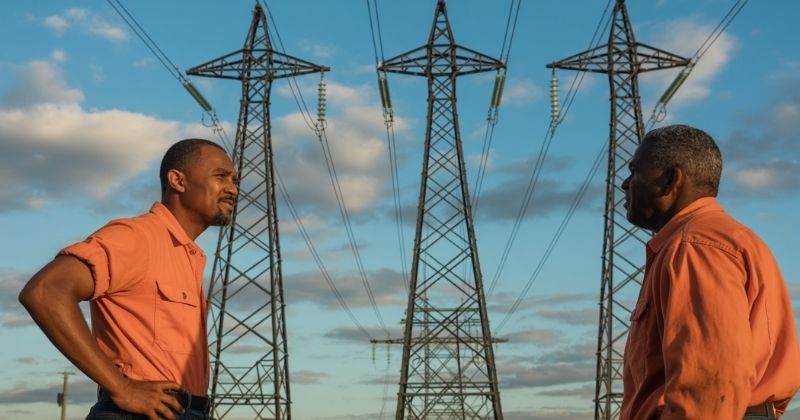
Eskom is currently depending heavily on burning diesel worth billions of rand in order to prevent the reintroduction of load shedding. While this strategy has so far succeeded in keeping power cuts at bay, there is a growing concern that the long-term outcome will be significantly higher electricity tariffs for South African consumers in the years ahead. This approach is effectively trading short-term supply stability for long-term financial pain, creating a situation where households could face heavier bills well after the current winter period has ended.
Key Takeaways
- Eskom’s Short-Term Fix Could Mean Long-Term Costs: Eskom has spent over R5.6 billion on diesel in just under four months of the 2025/26 financial year, using Open Cycle Gas Turbines to avoid load shedding. While effective now, this spending risks higher tariffs in future as the utility tries to recover costs.
- Improved Energy Availability Factor Masks Ongoing Reliance on Diesel: The Energy Availability Factor rose to 63.9 percent in June 2025, aided by restored generation capacity and reduced unplanned maintenance. However, much of the current stability still relies heavily on expensive diesel generation during peak demand.
- Rising Fuel Costs Threaten Electricity Affordability: Both diesel and coal prices are increasing, compounding Eskom’s financial pressures. Analysts warn these costs will eventually feed into tariff increases, even if current budgets appear to cover the spending.
About Arcadia Finance
Secure the funding you need through Arcadia Finance. With no application fees and a choice of 19 trusted lenders regulated by the National Credit Regulator, you can enjoy a simple process and loan options you can count on.
This issue surrounding the utility’s increased reliance on diesel was emphasised in the Minerals Council South Africa’s July 2025 electricity update, which provides an economic analysis of the country’s power system and was compiled by economist André Lourens. The report’s findings have reignited debates within the energy sector over whether Eskom is prioritising political pressure to keep the lights on over its financial sustainability.

Improvement in Energy Availability Factor
There were some positive findings in the report, with Eskom’s Energy Availability Factor (EAF) showing an increase of 3.6 percentage points in June 2025 to reach 63.9 percent. The EAF is considered a key performance measure as it reflects the proportion of Eskom’s generation fleet that is capable of producing electricity at any given time. For a utility under immense scrutiny, even small improvements in EAF are touted as significant wins, although experts warn they may mask deeper systemic issues.
Lourens explained that the improvement was largely the result of Eskom bringing additional generation capacity back online. This included the return to service of Medupi Unit 4, which has a capacity of 800 MW, on 6 July 2025. In addition, there was a reduction in unplanned maintenance outages amounting to approximately 2,600 MW in July compared to the previous month of June. The return of such large-scale units provides immediate relief to the grid, but it also underscores how dependent the system is on a few critical assets that remain vulnerable to breakdowns.
Eskom Confident for the Remainder of Winter
With only 24 days remaining in Eskom’s official winter outlook period, which continues until the end of August, the utility has stated that it is adequately prepared to meet demand for the rest of the season. Publicly, this confidence is being framed as evidence of operational improvement, yet behind the scenes industry insiders note it is largely propped up by aggressive diesel usage.
However, Lourens warned that the current stability in supply is dependent to a significant degree on the ongoing heavy use of Open Cycle Gas Turbines (OCGTs) to meet electricity demand during peak periods.
These turbines, while effective in emergencies, are among the most expensive and environmentally taxing ways to produce power, raising both economic and environmental concerns.
Billions Already Spent on Diesel in 2025
Between 1 April and 24 July 2025, Eskom spent R5.616 billion on fuel for its OCGTs. This figure represents almost half of the R11.432 billion that the utility had spent on diesel over the entire 2024/25 financial year. Such rapid expenditure so early in the financial year signals that current consumption levels may not be sustainable without future tariff adjustments or further borrowing.
While the use of OCGTs declined in July compared with June, Lourens noted that both the load factor and the total electricity output from these turbines remain higher than in the same period during 2024. This indicates that Eskom is still using diesel at a rate well above what it did a year earlier. This persistent reliance is raising fears that any significant reduction in diesel supply or price spikes could quickly plunge the country back into frequent load shedding.
Budget Forecasts May Be Too Conservative
Eskom has maintained that its diesel expenditure for the 2025/26 financial year is within its budget. Nevertheless, this budget was calculated using internal forecasts that may now appear to be overly conservative.
In its winter outlook presentation delivered in May 2025, Eskom had modelled a worst-case scenario where unplanned outages exceeded 15,000 MW. This scenario would have required 21 days of load shedding at up to stage 2, as well as diesel purchases totalling R4.8 billion. By late July, however, actual spending on diesel had already gone beyond this figure by about R460 million. The overshoot has raised red flags among energy economists who now expect Eskom’s budgetary pressures to worsen significantly before the end of the financial year.
The Hidden Cost to South Africans
Although the higher-than-expected use of diesel has helped to maintain an uninterrupted electricity supply, energy specialists have warned that this approach carries a financial burden that will be felt later. In effect, Eskom’s strategy is keeping households and businesses happy now, while deferring the true cost to future billing cycles.
Eskom’s dependence on diesel in recent years has already been one of the reasons it has made substantial applications for tariff increases. The National Energy Regulator of South Africa (Nersa) granted Eskom an average tariff increase of 12.74 percent for 2025/26, which was significantly below the 36.15 percent increase the utility had originally requested. This partial approval suggests that while regulators are pushing back, they may eventually have to yield to the mounting financial pressures Eskom faces.

Diesel Spending Linked to Tariff Hike Applications
Energy analyst Matthew Cruise from Impower explained in late 2024 that one of the reasons behind Eskom’s steep tariff application was the need to recover the billions of rand spent on diesel during the peak of the energy crisis. According to Cruise, Eskom has argued that current electricity prices do not adequately reflect the utility’s actual operating costs, and part of this gap is due to substantial diesel expenditure. The scale of this spending has shocked many observers, highlighting just how central diesel has become to Eskom’s crisis management strategy.
He pointed out that around R15 billion had been spent on diesel over the previous financial year, yet earlier tariff applications had not fully incorporated these costs. The high diesel usage during the most severe stages of the energy crisis generated significant debt that still requires repayment. Without addressing this debt, Eskom risks deepening its financial instability, creating a cycle where more borrowing leads to higher costs, which in turn trigger further tariff requests.
Long-Term Financial Strain and Rising Fuel Costs
The implication is that even though current diesel purchases may have been planned for in Eskom’s 2025/26 budget, they continue to contribute to the organisation’s broader financial difficulties. Over time, these pressures inevitably influence future tariff adjustments.
Consumers may not yet see the full impact on their monthly bills, but the financial shock is likely to surface within the next tariff cycle.
Cruise further cautioned that it is not only diesel that is becoming more expensive. The price of coal, which is Eskom’s primary fuel source for electricity generation, is also on the rise. This adds another layer of cost to electricity production and places further upward pressure on operating expenses. The combination of rising diesel and coal prices paints a grim picture for future electricity affordability in South Africa.

Costs Remain Despite Easing of Crisis
While the energy supply situation has improved compared to the worst stages of the crisis, Eskom’s current spending patterns reveal that the financial and operational consequences of the crisis remain deeply entrenched. The heavy reliance on costly fuels during critical demand periods continues to create a lingering financial impact that South Africans may ultimately bear through future tariff hikes. This means that even in a period without load shedding, the structural weaknesses in the country’s power system are far from resolved.
Conclusion
Eskom’s aggressive diesel use has provided South Africa with a rare period of consistent electricity supply during the 2025 winter, but the financial trade-off is becoming increasingly clear. With billions already spent and fuel costs rising, the short-term relief is likely to lead to long-term financial strain for the utility and its customers. Tariff increases, already a point of public contention, may become unavoidable as Eskom grapples with debt from past crises and ongoing high operating costs. While the lights may be on for now, the price of this stability is likely to be paid by South Africans in the years ahead.
Fast, uncomplicated, and trustworthy loan comparisons
At Arcadia Finance, you can compare loan offers from multiple lenders with no obligation and free of charge. Get a clear overview of your options and choose the best deal for you.
Fill out our form today to easily compare interest rates from 19 banks and find the right loan for you.


